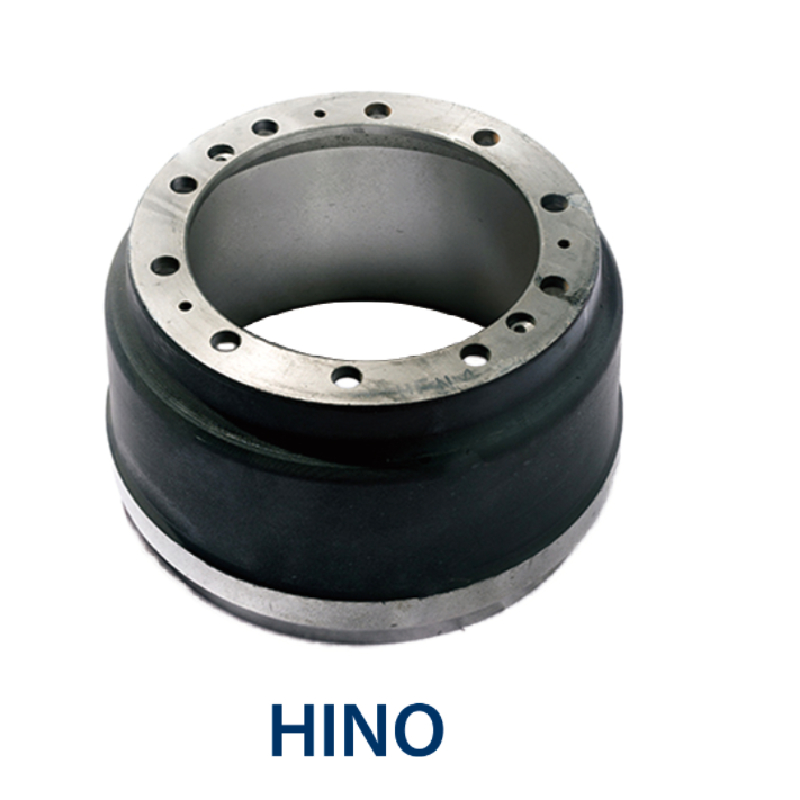Nov . 07, 2024 13:20 Back to list
Understanding the Function and Maintenance of Bus Brake Drums in Vehicle Safety
Understanding Bus Brake Drums A Critical Component of Vehicle Safety
The braking system of a bus is one of its most vital components, playing a crucial role in ensuring the safety of passengers and the driver. Among the various elements that constitute this system, the brake drum stands out as an essential part that warrants closer examination. While its function may seem straightforward, the complexity and engineering behind brake drums are significant, influencing not only performance but also safety and maintenance.
What is a Brake Drum?
A brake drum is a cylindrical component that functions as part of a drum brake mechanism. Traditionally made from cast iron or aluminum, it is mounted on the wheel hub and rotates along with the wheel. When the driver applies the brakes, brake shoes inside the drum press against the inner surface of the drum to create friction, slowing down or stopping the vehicle. The efficiency of this mechanism is paramount, particularly in larger vehicles like buses that carry significant weight and passengers.
Functionality and Design
In dual-brake systems, the brake drum usually works in conjunction with an auxiliary braking system, such as air brakes or hydraulic brakes, which enhances the overall stopping power. The design of the brake drum allows for greater surface area contact with the brake shoes, improving braking performance. The heat generated during braking is dissipated through the drum, which is critical in preventing brake fade—a reduction in stopping power that can occur when components overheat.
The construction of brake drums is engineered meticulously to ensure durability and reliability. Factors such as dimensional accuracy, material strength, and resistance to thermal expansion are all considered during the manufacturing process. Regular wear and tear can lead to issues like uneven surfaces or cracks, which compromise effectiveness and safety. Consequently, regular inspections and timely replacements are essential in maintaining a bus's braking system.
Importance of Brake Drums in Bus Safety
bus brake drum

Considering the size and weight of buses—often exceeding several tons—the importance of effective braking systems cannot be overstated. Brake drums enable safe deceleration and stopping, especially in heavy traffic or on steep inclines. A malfunction can lead to serious accidents, endangering passengers, other vehicles, and pedestrians. Thus, transit agencies and bus operators prioritize the maintenance of brake systems, with brake drums being focal points of regular safety checks.
Moreover, advancements in technology have also influenced brake drum designs. Innovations such as vented brake drums allow for improved heat dissipation, reducing the risks associated with overheating. Additionally, the introduction of composite materials for drums offers weight savings and improved performance.
Maintenance and Challenges
Despite their robust design, brake drums face myriad challenges throughout their service life. Factors like road conditions, driving habits, and environmental conditions can all lead to premature wear. For example, driving in mountainous regions requires more frequent application of brakes, leading to faster wear of components.
Routine maintenance practices include inspecting brake shoes and drums for wear, measuring the drum's internal diameter for any signs of out-of-roundness, and ensuring that the entire braking system is operating within manufacturer specifications. Failure to conduct these maintenance checks can lead to catastrophic failures.
Conclusion
In conclusion, bus brake drums are crucial for the effective functioning of a bus's braking system. Their design and materials are pivotal in ensuring safety and efficiency in public transport. Understanding their role and ensuring regular maintenance can prevent accidents and improve the overall longevity of the braking system. As we advance into an era of technological innovation, it will be interesting to observe how brake drum designs evolve, ensuring that our public transport systems remain safe, efficient, and reliable for all users. The quality and performance of these components should always be a priority for operators and regulatory agencies alike, reinforcing the importance of safety in transportation.
-
Scania Brake Drums: OEM Quality for Optimal Safety & Durability
NewsAug.16,2025
-
R.V.I: Advanced Remote Visual Inspection for Precision
NewsAug.15,2025
-
Discover HYUNDA: Innovative Vehicles, Equipment & Solutions
NewsAug.14,2025
-
R.V.I: Unlock Advanced Insights & Real-time Performance
NewsAug.13,2025
-
Kamaz Brake Drum: Durable & Reliable for Heavy Duty Trucks
NewsAug.12,2025
-
Heavy Duty Iveco Brake Drum - Premium Quality & Safety
NewsAug.11,2025
